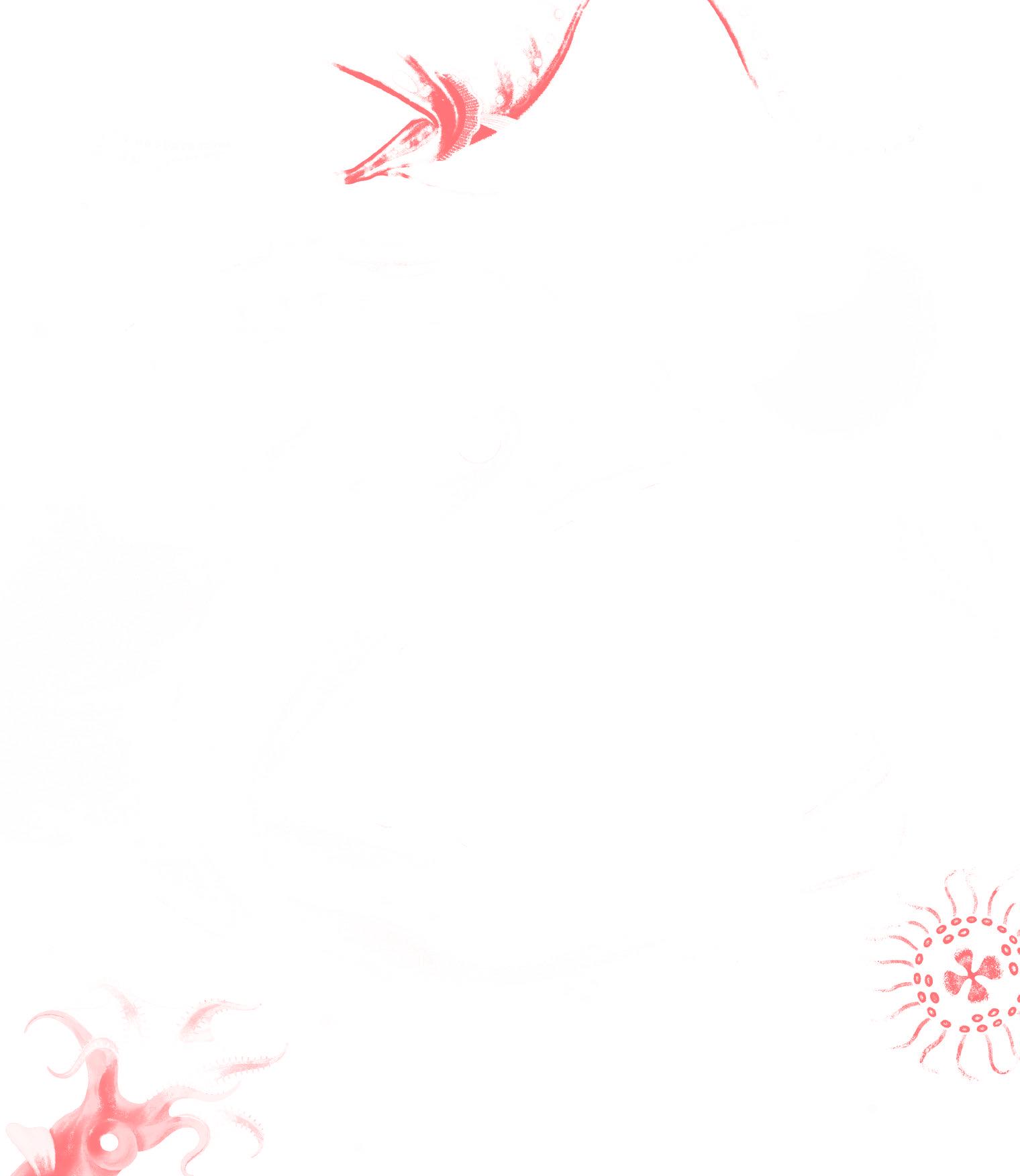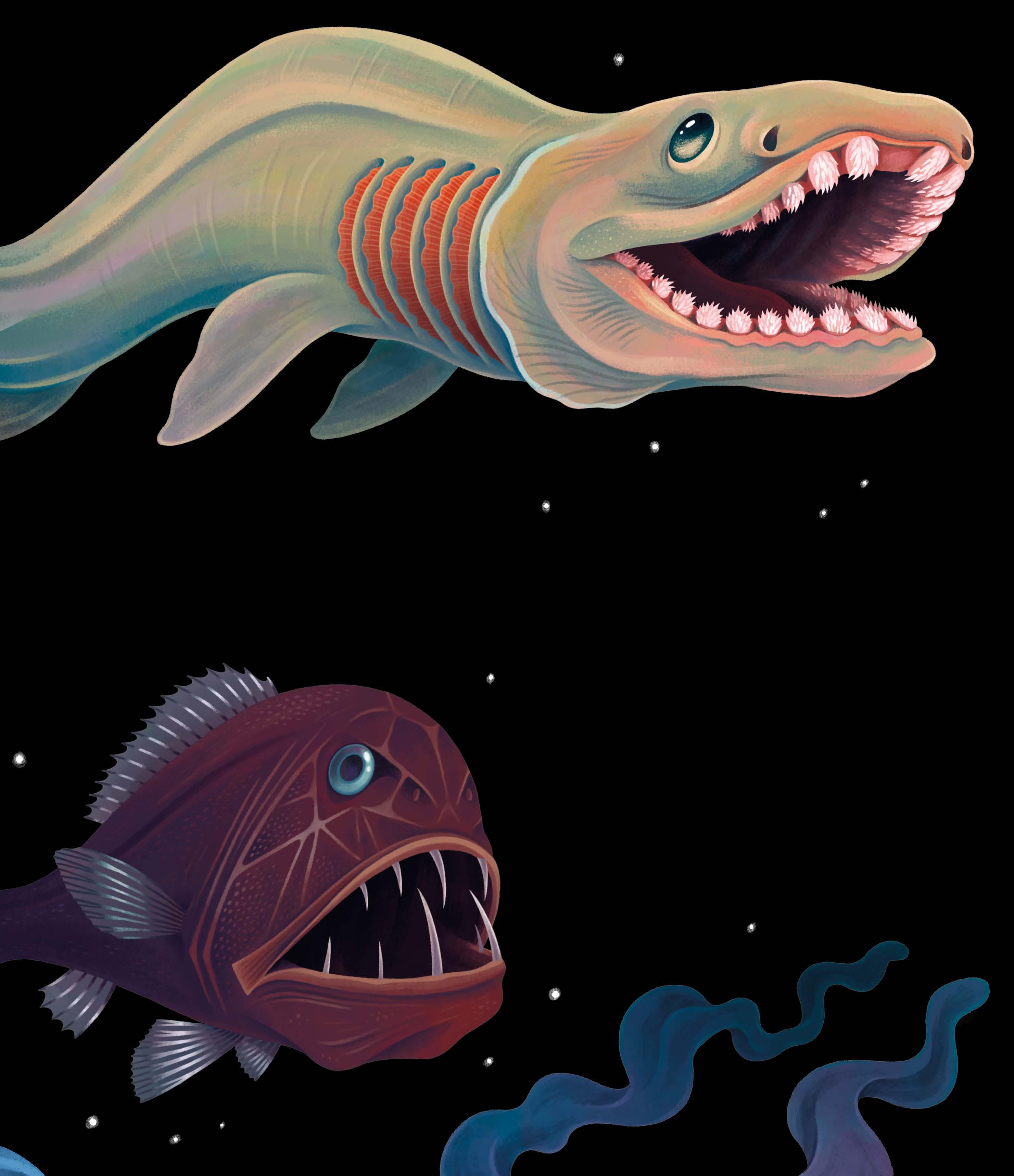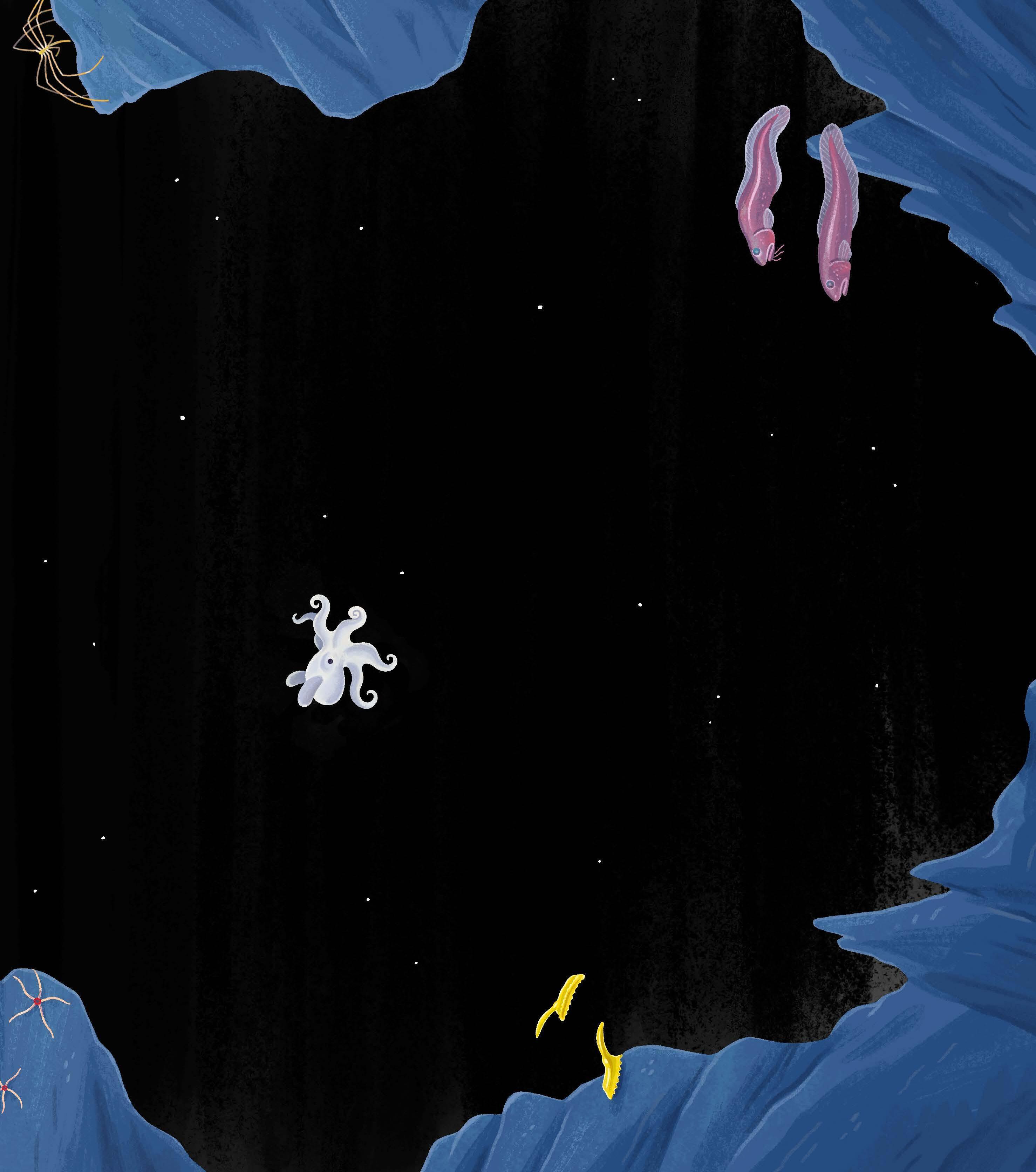by illustrated by
MATT RALPHS KALEY MCKEAN
written
To Alice, the best agent a writer could wish for K. M. M. R.
For Mom, Avarie, and Nolan
With thanks to Dr Rosalyn Wade from the Museum of Zoology and Dr Helen Scales for their contribution and advice.
First published 2024 by Nosy Crow Ltd Wheat Wharf, 27a Shad Thames, London, SE1 2XZ, UK
Nosy Crow Eireann Ltd
44 Orchard Grove, Kenmare, Co Kerry, V93 FY22, Ireland
ISBN 978 1 83994 334 8
Nosy Crow and associated logos are trademarks and/or registered trademarks of Nosy Crow Ltd.
Text © Matt Ralphs 2024
Illustrations © Kaley McKean 2024
Published in collaboration with the University of Cambridge
The right of Matt Ralphs to be identified as the author and Kaley McKean to be identified as the illustrator of this work has been asserted.
All rights reserved.
This book is sold subject to the condition that it shall not, by way of trade or otherwise, be lent, hired out or otherwise circulated in any form of binding or cover other than that in which it is published. No part of this publication may be reproduced, stored in a retrieval system, or transmitted in any form or by any means (electronic, mechanical, photocopying, recording or otherwise) without the prior written permission of Nosy Crow Ltd.
The publisher and copyright holders prohibit the use of either text or illustrations to develop any generative machine learning artificial intelligence (AI) models or related technologies.
A CIP catalogue record for this book is available from the British Library.
Printed in China following rigorous ethical sourcing standards.
DARK A DES c ENT
You might think in our high-tech age of aeroplanes, satellites and powerful cameras that every inch of our planet has already been explored. That wherever you choose to go, even wild places far off the beaten track, there will be a map to help you find your way. That pretty much every type of plant and animal has been discovered, studied and catalogued. That, in fact, there’s not much mystery left waiting to be brought into the light.
But you’d be wrong. There is a place on Earth that’s hardly been explored at all. It lies beneath the Sunlight Zone – the topmost and thinnest layer of sea that basks in the light and heat of the sun – and in some places plunges over ten kilometres down.
The deep sea.
A vast environment that despite the near-freezing temperatures, crushing water pressure and total darkness is home to thousands of amazing creatures perfectly adapted to live there: a magnificent menagerie of monsters; a bizarre phantasmagoria of the strange and the wonderful. From sharks that can live for 500 years, to fish with teeth so long they can’t close their mouths, to sea spiders that suck prey’s innards up through a tube.
Studying these natural wonders is difficult. Diving equipment capable of functioning in the deep sea is expensive, many of the creatures are rare or hard to spot in the gloom, and capturing them alive is nearly impossible because deep-sea animals are delicate and usually die when they are caught in nets or dragged up from their high-pressure habitat.
Scientists don’t know how many different creature types live in the deep-sea and more are being discovered all the time. Vehicles called submersibles can travel down into the depths with cameras, and it seems that every scientific expedition into the abyss, usually involving uncrewed, camera-equipped submersibles, turns up yet more species nobody has seen before.
What I can tell you with certainty is that this book contains just a fraction of the beasts that live in the deep. So, take a deep breath and plunge into a journey of discovery . . . down . . . down . . . down . . . into the ocean’s depths.
The deepest oceans are divided into five layers, or ‘zones’. The topmost layer, basking in the Sun’s heat and light, hosts the most life. Light decreases and pressure increases the deeper down you go –but life, nevertheless, still thrives.


















